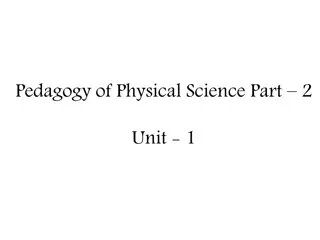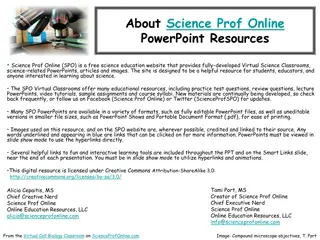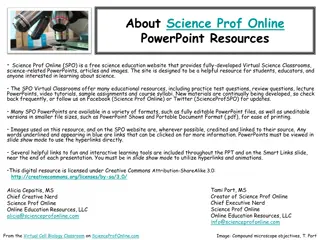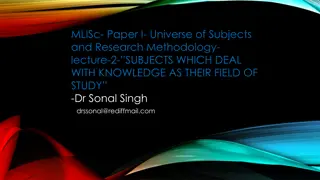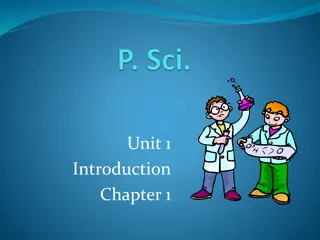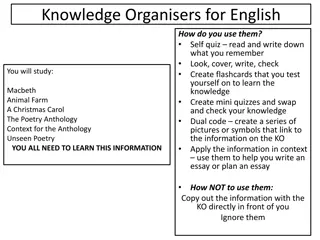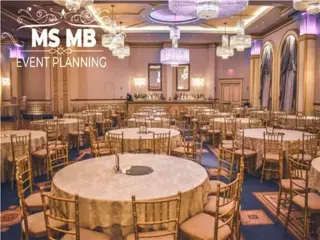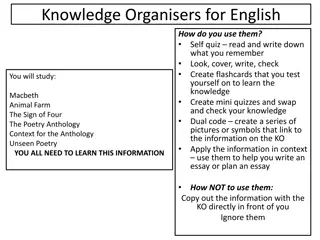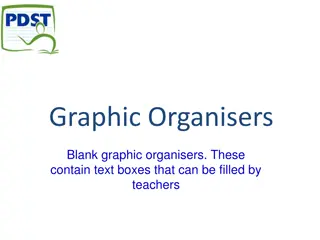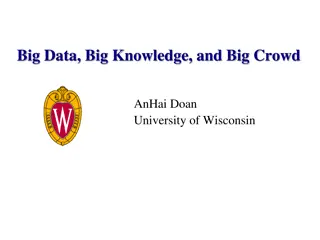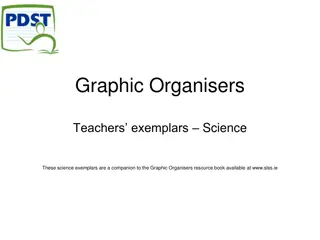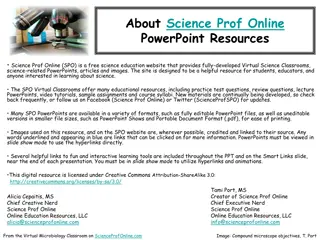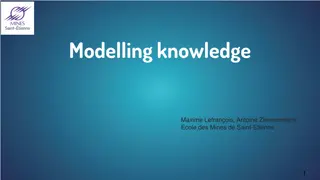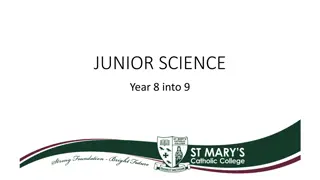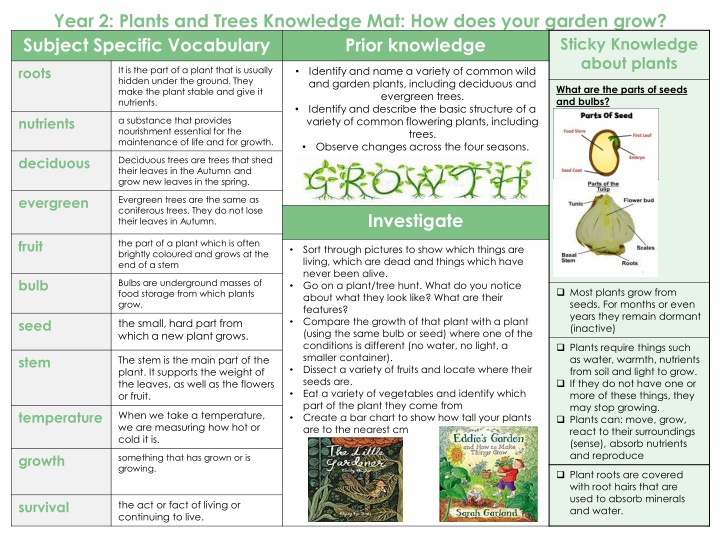
Exploring Plants, Trees, and Habitats: Educational Insights
Dive into a comprehensive guide on plant growth, tree identification, and habitat exploration. Discover the fascinating world of plants, learn about different tree types, and explore the interdependence of living organisms in various habitats.
Download Presentation

Please find below an Image/Link to download the presentation.
The content on the website is provided AS IS for your information and personal use only. It may not be sold, licensed, or shared on other websites without obtaining consent from the author. If you encounter any issues during the download, it is possible that the publisher has removed the file from their server.
You are allowed to download the files provided on this website for personal or commercial use, subject to the condition that they are used lawfully. All files are the property of their respective owners.
The content on the website is provided AS IS for your information and personal use only. It may not be sold, licensed, or shared on other websites without obtaining consent from the author.
E N D
Presentation Transcript
Year 2: Plants and Trees Knowledge Mat: How does your garden grow? Subject Specific Vocabulary Prior knowledge Sticky Knowledge about plants roots Identify and name a variety of common wild and garden plants, including deciduous and evergreen trees. Identify and describe the basic structure of a variety of common flowering plants, including trees. Observe changes across the four seasons. It is the part of a plant that is usually hidden under the ground. They make the plant stable and give it nutrients. What are the parts of seeds and bulbs? nutrients a substance that provides nourishment essential for the maintenance of life and for growth. deciduous Deciduous trees are trees that shed their leaves in the Autumn and grow new leaves in the spring. evergreen Evergreen trees are the same as coniferous trees. They do not lose their leaves in Autumn. Investigate fruit the part of a plant which is often brightly coloured and grows at the end of a stem Sort through pictures to show which things are living, which are dead and things which have never been alive. Go on a plant/tree hunt. What do you notice about what they look like? What are their features? Compare the growth of that plant with a plant (using the same bulb or seed) where one of the conditions is different (no water, no light, a smaller container). Dissect a variety of fruits and locate where their seeds are. Eat a variety of vegetables and identify which part of the plant they come from Create a bar chart to show how tall your plants are to the nearest cm bulb Bulbs are underground masses of food storage from which plants grow. Most plants grow from seeds. For months or even years they remain dormant (inactive) seed the small, hard part from which a new plant grows. Plants require things such as water, warmth, nutrients from soil and light to grow. If they do not have one or more of these things, they may stop growing. Plants can: move, grow, react to their surroundings (sense), absorb nutrients and reproduce stem The stem is the main part of the plant. It supports the weight of the leaves, as well as the flowers or fruit. temperature When we take a temperature, we are measuring how hot or cold it is. growth something that has grown or is growing. Plant roots are covered with root hairs that are used to absorb minerals and water. survival the act or fact of living or continuing to live.
Year 2: Living things and their habitats Knowledge Mat: Do living things depend on each other? Subject Specific Vocabulary Life processes S sensitivity G- growth R- reproduction E- excretion N- nutrition as pets but others are not. All animals need water, air and food Indigenous occurring naturally in a particular region or environment. environment on Earth are called the environment herbivore plants. Investigate omnivore a variety of food of both plant and animal origin be found there. Go on a minibeast hunt. What minibeasts can you find? Why can they survive in their habitat? Create a tally chart or pictogram to show your results. Compare two different microhabitats. What do you notice about the minibeasts that live in each one? Why do you think that is? Discuss how the minibeasts help keep the microhabitat healthy. habitat or other living things that all share common characteristic. microhabitats small-scale physical requirements of a particular organism or a community of organisms. Prior Knowledge Sticky Knowledge about habitats M- movement R- respiration The names of some common plants and types of trees. Some animals are suitable to be kept What is a habitat? A habitat is a place where living things can find all of the things they need to survive. This includes food, water, air, space to move and grow and some shelter. Some habitats are large, like the ocean, and some are very small, such as under a log. Some habitats in our local area include the river and woodlands. Other habitats include the coast and the forest Produced, growing, living, or to survive Animals can be grouped into vertebrates and invertebrates Animals can be grouped into carnivores, herbivores and omnivores. Which things are living and dead. All the physical surroundings an animal that feeds on What is a microhabitat? Microhabitats are very small habitats where minibeasts may live. Examples of microhabitats include under stones, in grass, under fallen leaves and in the soil. Minibeasts that can be found there include worms, snails, ants, centipedes, millipedes, and butterflies and they help to keep the microhabitat healthy. Minibeasts are able to survive in their habitats because they can find the things they need to survive there, such as food and water. an animal or person that eats Compare two different habitats and explain what animals and plants can carnivore an animal that feeds on other animals food chain a series of organisms each dependent on the next as a source of food. A group of animals, plants How do animals and plants depend on each other? Animals and plants depend on each other to survive. Birds also need worms because they eat them. Worms are a source of food for birds. This called a food chain. Microhabitats are the
Year 2: Animals including humans Knowledge Mat How will I grow up healthy? Subject Specific Vocabulary Prior Knowledge healthy that are good for your body things like eating nutritious foods, exercising, brushing your teeth and getting enough sleep diet choosing foods in the right amounts from each of the food groups. off-spring an animal s young as their off-spring. disease animals, or plant exercise running, walking and playing. You will need to feel out of breath if you have exercised properly. humans reference to baby, toddler, child, teenager, adult. Sticky Knowledge about healthy living Keeping healthy means doing things There are five types of vertebrates (mammals, fish, reptiles, amphibians, birds) Vertebrates are animals that have a backbone. Some animals are suitable to be kept as pets but others are not. Some animals give birth to live young but others lay eggs. Doctors and nurses give us medicine when we are poorly. Know that animals, including humans, have young animals that will grow into adults. A life cycle is the series of changes that an animal or plant passes through from the beginning of its life until its death. Eating a balanced diet means You can refer to a person s children or an illness which affects people, Means to keep your body healthy by Growing into adults can include What do all animals need to survive? All animals need water, air and food to survive. Investigate life cycle The series of changes that an animal or plant passes through from the beginning of its life until its death Match animals to their offspring Compare and contrast offspring to their parents. Compare the heights/hand spans of people at different stages of their lives. Order the stages in human life. Participate in a series of exercises and investigate how each exercise: makes your body feel affects your breathing uses each of your muscles What do humans need to be healthy? To keep healthy, humans need to: eat a balanced diet and healthy food (which includes eating 5 fruit and vegetables every day). do some exercise to keep their muscles and bones healthy (It s important to have 30-60 minutes of exercise every day. This can include running around and playing games with friends.) to take medicines that are given by doctors and nurses when feeling poorly to keep good hygiene by washing regularly, having clean clothes, brushing teeth and hair. hygiene Keeping yourself and your surroundings clean, especially in order to prevent illness or the spread of diseases nutrition Food provides essential substances called nutrients. Nutrition includes all the stuff that's in your food, such as vitamins, protein, fat, and more. It's important to eat a variety of foods, including fruits, vegetables, dairy products, and grains, so you have what you need to grow and be healthy.
Year 2: Materials Knowledge Mat: How useful are materials? Subject Specific Vocabulary Prior Knowledge Sticky Knowledge about materials metal When heated, metals can be shaped into anything from a tiny paperclip to a huge aircraft. Objects are things that you can touch or see. Objects are made from materials. Some materials that objects are made from (e.g. glass, wood, plastic) Some words to describe materials (e.g. shiny, soft, rough, absorbent) Materials which are natural and which are man-made. Wood is used to make buildings and furniture and for making fires and heating. plastic Plastics are made from natural materials such as wood, coal and oil. Most of the paper or cardboard we use came from trees. Suitable Something that is suitable for a particular purpose or occasion is right or acceptable for it. Glass is a hard transparent material that can be made in many shapes. Natural Glass is usually transparent, which means you can see through it, but can also come in different colours. Things that exist in nature and are not made by people. Investigate wood Glass is often used to make windows and bottles. Wood is a material that comes from trees and is used to make furniture, floors and many other things Explore the properties of different kitchen papers and disposable cloths. Rise to the challenge of mopping water from the floor. Which paper is the most absorbent? Which will be the best for mopping up the spillage? How can we make the fabrics waterproof? Colour them in with wax crayon and repeat the investigation! squashing Many churches have special coloured glass often used to make religious pictures. Squashing is pushing things closely together. bending Bending is changing the shape and direction of something. Plastics are used to make many of the things we use in everyday life. They are used for toys, bicycle helmets, mobile phones, window frames and many other common items. twisting To twist something you move one part clockwise and the other part anticlockwise. stretching Stretching is to change shape by pulling it to make it longer or wider. Man made Plastics are man made and was first used over 100 years ago. Things are created by people.




